| View previous topic :: View next topic |
| Author |
Message |
tomzcafe


Joined: 01 Jun 2009
Posts: 196
|
 Posted: Fri Aug 21, 2009 2:27 pm Post subject: Night Photography - Seek advice Posted: Fri Aug 21, 2009 2:27 pm Post subject: Night Photography - Seek advice |
 |
|
tomzcafe wrote:
I tried to take some photographs during full moon few weeks ago and I notice that photos that I consider good are always have the same settings; use tripod, select small aperture (f <11> 10 seconds).
here are some samples
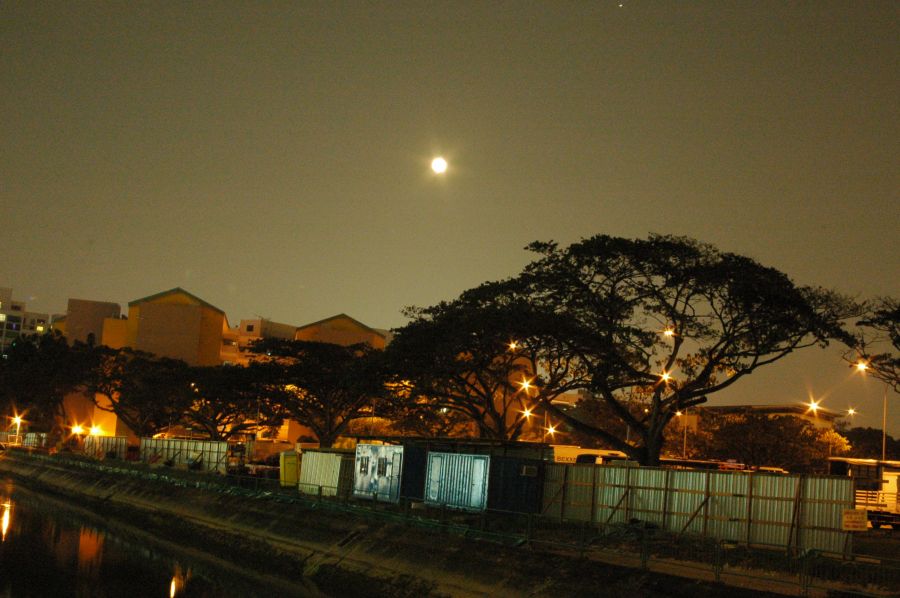

I am wondering whether there are any other methods in getting better night photographs.
_________________
http://www.flickr.com/photos/oom_tommy
Last edited by tomzcafe on Fri Aug 21, 2009 2:44 pm; edited 1 time in total |
|
| Back to top |
|
 |
tomzcafe


Joined: 01 Jun 2009
Posts: 196
|
 Posted: Fri Aug 21, 2009 2:47 pm Post subject: Posted: Fri Aug 21, 2009 2:47 pm Post subject: |
 |
|
tomzcafe wrote:
It was submitted unintentionally before I complete writing it up and attached the pictures.
Now, 2 pictures are up.
Thanks.
_________________
http://www.flickr.com/photos/oom_tommy |
|
| Back to top |
|
 |
Nesster


Joined: 24 Apr 2008
Posts: 5883
Location: NJ, USA
Expire: 2014-02-20
|
 Posted: Fri Aug 21, 2009 3:27 pm Post subject: Posted: Fri Aug 21, 2009 3:27 pm Post subject: |
 |
|
Nesster wrote:
There are exposure guidelines for shooting the moon around the net - it requires surprisingly little exposure (essentially an open shadow exposure or thereabouts) to get the 'man on the moon' to show. This of course puts the rest of the scene into darkness, which may or may not be what you want.
Lower ASA means less noise/grain.
_________________
-Jussi
Camera photos
Print Photographica
|
|
| Back to top |
|
 |
Ballu

Joined: 28 Feb 2007
Posts: 912
Location: Columbus, OH. USofA
|
 Posted: Fri Aug 21, 2009 5:33 pm Post subject: Posted: Fri Aug 21, 2009 5:33 pm Post subject: |
 |
|
Ballu wrote:
Few things I take care of...
1) Sturdy Tripod
2) Mirror lock-up
3) Capture with 2 or 10 -sec timer
4) Stopped down
5) Low ISO (unless planning to convert to B/W)
6) Sturdy Tripod
With digital, its not a big issue...
Eventually, you cant get everything.. There is a limit of dynamic range of CCD/CMOS sensor as well as film... you can get either good lights (and say b-bye to shadows) or get shadows but loose everything  . Over-exposed pics in digital is of no use.. I have never tried, but from others work, some B&W films handles the overexposed lights pretty good. . Over-exposed pics in digital is of no use.. I have never tried, but from others work, some B&W films handles the overexposed lights pretty good.
These are some of mine night pics.. Dont have much, but I love night captures...
http://www.flickr.com/search/?q=night&w=30394875@N00&m=tags
Some captures...
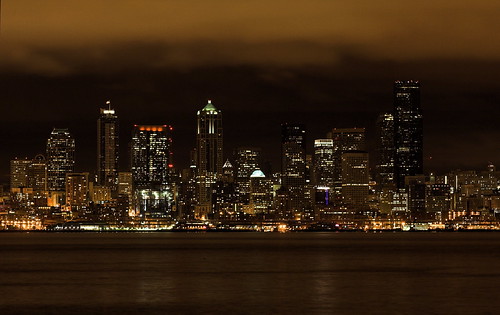
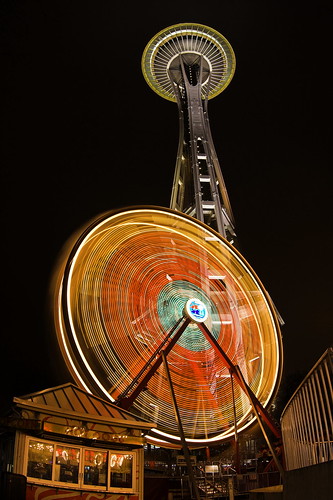
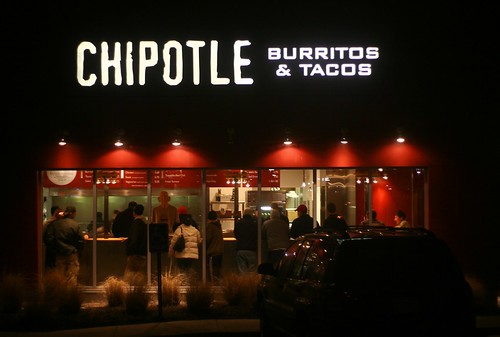
And moon is very bright. Do a spot metering at the center of moon. And sturdy tripod... You will never miss the shot (just do some +/- EV captures). You need to clean the white Balance...
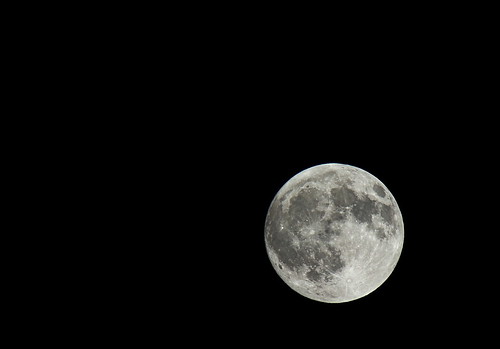
Sturdy tripod and sharp lens... and need to go out...
_________________
-Ballu
http://balyanpage.blogspot.com/ |
|
| Back to top |
|
 |
Abbazz


Joined: 23 Jun 2007
Posts: 1098
Location: Jakarta
|
 Posted: Sat Aug 22, 2009 7:00 am Post subject: Posted: Sat Aug 22, 2009 7:00 am Post subject: |
 |
|
Abbazz wrote:
| Ballu wrote: |
| And moon is very bright. Do a spot metering at the center of moon. And sturdy tripod... You will never miss the shot (just do some +/- EV captures). |
Yes, many people think the moon needs a lot of exposure because it appears against the night sky, which is indeed very dark. Lightmeters also think the same way.
In fact, the moon is lit directly by the sun, so it is as bright as something you shoot under the sun at noon time. Therefore, the "Sunny 16" rule applies, which means that if you set the aperture at F/16, then the optimum speed is the reciprocal of the ISO number you are using: for an ISO 400 setting, you have to use 1/400 sec. When I shoot the moon I try to keep the ISO at 200 and the aperture at F/8, because these setting provide good results with my camera and lens, which means I can shoot at around 1/800 sec. You can see there is no need for a very sturdy tripod at this speed, as long as it is strong enough to support the weight of the camera+lens combination you are using.
Cheers!
Abbazz
_________________
Il n'y a rien dans le monde qui n'ait son moment decisif, et le chef-d'oeuvre de la bonne conduite est de connaitre et de prendre ce moment. - Cardinal de Retz
The 6x9 Photography Online Resource:
http://artbig.com/ |
|
| Back to top |
|
 |
Arkku


Joined: 28 Feb 2007
Posts: 1416
Location: Helsinki, Finland
|
 Posted: Sat Aug 22, 2009 11:19 am Post subject: Posted: Sat Aug 22, 2009 11:19 am Post subject: |
 |
|
Arkku wrote:
I recommend overexposing from the �sunny 16� rule; that makes for a more �scientific� photograph of the moon, but doesn't look as bright (in my opinion) as the real thing contrasted against the night sky. I suppose this is also why spot metering with lenses not-too-long works for Ballu; part of the black sky is included and the exposure is boosted slightly from what would be required to make the moon a dull mid-grey.
For shooting the moon I find that the best tips are to keep the shutter speed high to avoid blur from shake, mirror lock-up if you have it, and release shutter by cable if using very heavy lenses or a telescope. A couple of my attempts at shooting the moon:

(EBC Fujinon-T 400mm f/4.5, ISO 100, 1/125s, cropped)

(750mm f/4.9 newtonian reflector, Komura 2� teleconverter, ISO 400, 1/160s� a bit soft due to the gear used)
Unfortunately both shots are of the full moon, but the best details are seen when its partially in shadow, because it is the shadows that bring out the crates.
As for general nighttime photography, I agree with Ballu's list above. I especially enjoy the use of long exposures, they somehow help convey a �serene� nighttime mood by blurring any motion (of water, traffic, or whatever) into smoothness, e.g.:

(EBC Fujinon-SW 19mm f/3.5 @ f/16, ISO 400, 30 seconds� It may look too bright for a night-time shot to some of you, but this is summer in Finland and it just doesn't get dark.)
Last edited by Arkku on Sat Aug 22, 2009 6:53 pm; edited 1 time in total |
|
| Back to top |
|
 |
djmike


Joined: 01 Apr 2009
Posts: 930
Location: Taiwan
|
 Posted: Sat Aug 22, 2009 1:14 pm Post subject: Posted: Sat Aug 22, 2009 1:14 pm Post subject: |
 |
|
djmike wrote:
| Arkku wrote: |
For shooting the moon I find that the best tips are to keep the shutter speed high to avoid blur from shake, mirror lock-up if you have it, and release shutter by cable if using very heavy lenses or a telescope. A couple of my attempts at shooting the moon:

(EBC Fujinon-T 400mm f/4.5, ISO 100, 1/125s, cropped)
|
Wow, I love this. Great Shot.
_________________
DSLR: Canon 400D
SLR: Nikon FM2 + Canon A-1 + Canon AE1-P + Praktica MTL-5B + Pentax Spotmatic F + Fujica ST801 + Voigtlander Bassematic + Voigtlander Vito + Rollei 35S + Rolleiflex SL35 ME + Canon QL17 GIII + Olympus Pen EE-3
Lenses
M42: CZJ Flektogon 35/2.4 + CZJ Flektogon Zebra 35/2.8 + CZJ Pancolar 50/1.8 + CZJ Sonnar 135/3.5 + CZJ Tessar 50/2.8 Chrome + Pentacon 135/2.8 + Pentacon 50/1.8 + SMC Takumar 50/1.4 + SMC Takumar 55/2 + SMC Takumar 135/3.5 + Fujinon 55/1.8 + Jupiter-9 85/2 + Jupiter-37A 135/3.5 + Helios 44-6 58/2
Nikor: Nikkor 50/1.4 + Nikkor 28/3.5 + Nikkor 35-105 Zoom + 36-72 Series E Zoom
Canon: Canon FD + 28/2.8 + 50/1.8 + Canon 35-105 Macro Zoom
Other: Rollei Planar HFT 50/1.8
|
|
| Back to top |
|
 |
aoleg


Joined: 22 Feb 2008
Posts: 1389
Location: Berlin, DE
|
 Posted: Sat Aug 22, 2009 8:52 pm Post subject: Posted: Sat Aug 22, 2009 8:52 pm Post subject: |
 |
|
aoleg wrote:
| Arkku wrote: |

(EBC Fujinon-SW 19mm f/3.5 @ f/16, ISO 400, 30 seconds� It may look too bright for a night-time shot to some of you, but this is summer in Finland and it just doesn't get dark.) |
I love this one!
_________________
List of lenses |
|
| Back to top |
|
 |
F16SUNSHINE


Joined: 20 Aug 2007
Posts: 5486
Location: Left Coast
Expire: 2011-11-18
|
 Posted: Sat Aug 22, 2009 10:37 pm Post subject: Posted: Sat Aug 22, 2009 10:37 pm Post subject: |
 |
|
F16SUNSHINE wrote:
I will assume that you are desiring to take landscapes and scenes using the light of the full moon rather than the moon himself.
Using an exposure meter in the NW part of the united states. I find that on the full moon with a clear night you can find a reflective reading of 1EV.
So if you use sunny16 rule  as a starting point and assume the following. as a starting point and assume the following.
ISO 100
Sun to your back at mid day
this is EV 15
so you need to add 14 stops of exposure.
Most lenses will perform best for landscapes at f8.
So using a Digital SLR with lens at F8 ISO set at 100 exposure time should be approximately 8 minutes ......16 stops total to get to f 
So I said approximately because there are other factors.
Camera model ...........My experience is with Canon. Others may very.
Film reciprocity failure rates. This will very by films but can be 1.5-2 stops for Provia/Velvia for example.
External man made light
Extra reflected light from water, light colored buildings, snow...etc.
Experiment a bit until you get what you like.
Here are two from a series I posted here.
http://forum.mflenses.com/moonlight-witch-park-t6571,highlight,moonlight+witch+park.html
The first is with a Pentax 6x7 and 55mm f4 Fuji Porta 160S f8 at 13min
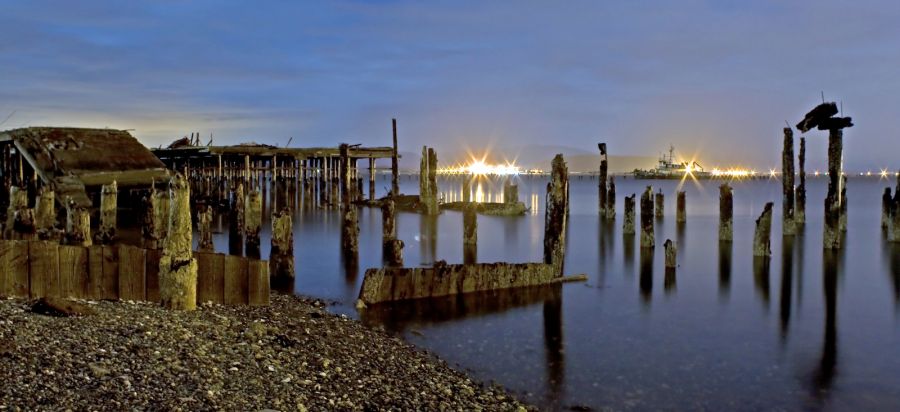
And this one with Canon 5D and Zuiko 2/21 f8 8 min ISO 100Vignetting courtesy of my absentmindedly leaving a too small hood on 
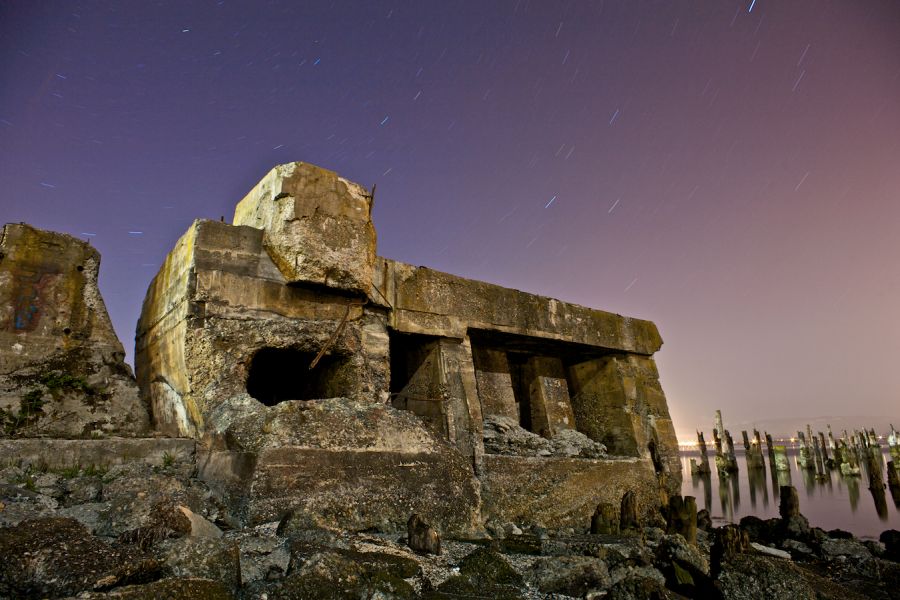
_________________
Moderator |
|
| Back to top |
|
 |
cooltouch


Joined: 15 Jan 2009
Posts: 9097
Location: Houston, Texas
|
 Posted: Sun Aug 23, 2009 3:38 am Post subject: Posted: Sun Aug 23, 2009 3:38 am Post subject: |
 |
|
cooltouch wrote:
You know what's a really handy thing to have in your camera bag besides photo gear? A photographer's field guide. I have an old Kodak one around here somewhere, and I have a National Geographic one (pub 1988) sitting right in front of me at the moment. It has a six-page section devoted to night photography with exposure and composition suggestions for a variety of conditions, from dusk to deep night. Brightly lit night scenes to quiet ones.
The good thing about a field guide for this type of photography is there are lots of situations where the camera's onboard meter will not yield optimum exposure results. NatGeo (and Kodak) provide advice based on results from the good ol' trial-and-error method.
For the moon, NatGeo recommends -- obviously they're thinking Kodachrome here -- 1/250 at f/8 at ISO 64. That seems to be a bit on the short side for me. Years ago, I read from an equally unimpeachable source (that I don't recall anymore) that, when the moon is well above the horizon, 1/ISO at f/8 was the exposure to use. And that's what I have used, with good results. However, I've read that others prefer 1/ISO at f/11 and at f/16. When in doubt, bracket, I suppose.
Best,
Michael |
|
| Back to top |
|
 |
Big Dawg


Joined: 28 Jan 2009
Posts: 2530
Location: Thach Alabama
|
 Posted: Mon Aug 24, 2009 1:31 am Post subject: Posted: Mon Aug 24, 2009 1:31 am Post subject: |
 |
|
Big Dawg wrote:
No one group of settings is the correct one to use. Just too many variables for each instance. Good guidelines here to follow but you will still have to bracket with film and shoot several trial shots with digital. I just setup and shoot with my K10D or my Kodak DX6490. I select an ISO and use A priority and adjust the aperture till I'm getting the shot I want. just my way of doing it. KISS LOL
_________________
Big Dawg |
|
| Back to top |
|
 |
tomzcafe


Joined: 01 Jun 2009
Posts: 196
|
 Posted: Mon Aug 24, 2009 3:02 am Post subject: Posted: Mon Aug 24, 2009 3:02 am Post subject: |
 |
|
tomzcafe wrote:
Hello everyone,
thanks for the comment and advice.
yes, I try to take picture of the night scene rather than the moon itself.
since I am getting more and more to the same setting (f <11> 10 seconds) for each and every night scene, i was thinking that this was the same as when I use a pocket p&S camera. No need to think !
I will take the advice on playing with ISO settings and try to notice the difference of lights available on the location.
thanks again !
_________________
http://www.flickr.com/photos/oom_tommy |
|
| Back to top |
|
 |
|
|
|
You cannot post new topics in this forum
You cannot reply to topics in this forum
You cannot edit your posts in this forum
You cannot delete your posts in this forum
You cannot vote in polls in this forum
|
